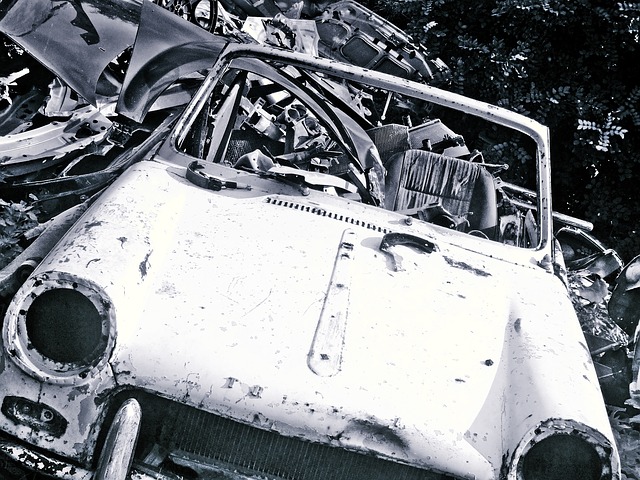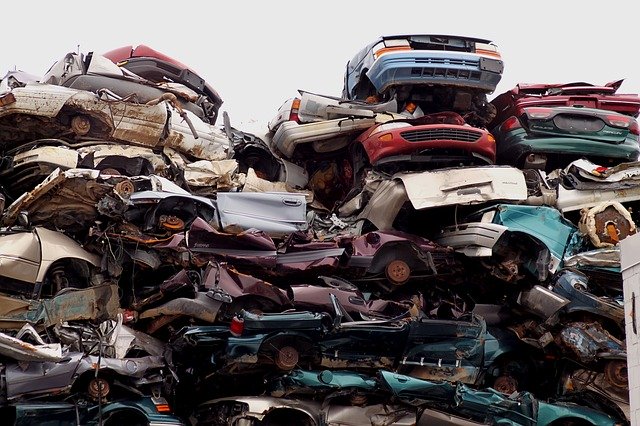Auto Wrecking Yards – In the 21st century, if we are asked to name one industry whose brilliance is at par with the every-swelling technological advancements then it would unarguably be the automobile sector. Thus, the automobile manufacturing business evidently contributes a generous chunk in the global economy and considering the increasing influence of capitalism in every part of the society, its reign can only grow stronger from this point. However, the constant production of newer vehicles and extermination of the older ones creates a lot of waste which if not managed mindfully will only animate the repercussions of pollution and global warming.
Fortunately, the auto salvaging industry has chalked out a separate policy to deal with the wrecked parts of the outmoded cars and reluctantly spare the landfills from the additional burden of the same. The derelict and the exhausted vehicles end up in auto wrecking yards from where they are either sensibly disposed of or recycled for further use.
The story after the cars ends up in auto wrecking yards…
Considering the current situation of the environment, it wouldn’t be completely wrong to affirm that every bit of it is shrieking to be rescued. The uncontrolled climate change, melting snowcaps, the rise of sea levels and extinction of several species of flora and fauna have taken up the form of violent death knells which have been falling on our deaf ears for quite some time. Nevertheless, now we have reached the dead-end and all we are left with is a planet that needs to be revitalized at the earliest and thankfully, the automobile sector is efficiently fulfilling their responsibilities to steer the wheel in the opposite direction.
After the cars end up in the wrecking yards, they are mostly salvaged; meaning, the used, unwanted and worn-out vehicles are thoroughly filtered and their exploitable counterparts are then refurbished, recycled or sold in bulk to dealers. Let us not forget that the term “auto salvaging” can stand true in case of any vehicle that is taken off the road because of an accident, mechanical dysfunction or outgrown maturity. This implies that people who buy these salvaged cars either resell their parts for profit, use them to develop better for car companies or just ensure that they are effectively recycled.
How does the mechanism work?
At an auto wreck yard, the salvaging mechanism is initiated by “pre-treatment” which is the step prior to disintegrating the car. Fundamentally, this phase prepares the car to safeguard itself from any unforeseen leakage of fuels, coolants, and other such fluids during the dissembling. The most interesting part about this procedure lies in the fact that the fluids removed from the car can be capitalized on by the mechanics themselves, sold, recycled or used in any other car. Once the fluids are pushed out of the way, the gas tank, batteries, and tires are removed and they too, can either be sold off or preserved for renovation. For instance, depending upon the model and current state of the gas tank, it can be passed on to other users or reprocessed as scrap metal. On the other hand, even if the tires have the slightest trace of life remaining in them, they are hawked off or used as ground rubber.
Like we have already mentioned, these stages constitute the “pre-treatment” of the car; once all of them are efficaciously achieved, the chief parts of the vehicle are split apart. Principally, these are the segments that the salvager pays the most attention to and looks forward to drawing his profits from. Everything, including the window controls, floor mats, and the engine can be retailed as long as the owner or salvager finds a profitable bid. If not, the parts are recycled as scraps.
There are several salvage yards that after analyzing the parts and delineating their estimation leave them inside the car in their original forms thereby, furnishing the customers with an opportunity to utilize the ones that they would genuinely put to use and discard the others. In contrast to this scenario, some organizations strain out the parts themselves; after they have arrived at a conclusion about which of them can be recycled and which can be sold, they clean and restore the constituents to then sell them to a retailer or on an online platform.
Lastly, when the cars are stripped of all its rudiments, the seats, carpets, consoles are removed and the metal body of the car is then grinded and recycled into scrap metal as well.
Why are the auto wrecking yards beneficial?
Bearing in mind the results ensued from auto wrecking yards, the first and most important benefit that hits our mind is that it curbs the environmental hazards to a large extent. Secondly, giving up the car when it can no longer be refurbished as a whole can save people a lot of money when they are looking for substitutes and wants to cut down on the resources invested in new goods and materials including steel.

As far as the owners of these salvaged parts are concerned, they can get their hands on some invaluable parts that might have originally cost them a bomb. Furthermore, you will be delighted to know that automobiles are indeed one of the most recycled objects on this planet and this confirmation makes way for owners and dealers to obtain several parts that are statutory for their vehicles.
Once your car is taken to the auto wrecking yards, you can ask the salvager to equip you with the parts that are effectual to be used in your new car or saved as a backup or sell the whole vehicle to the junkyard for its recycling.
The bottom line
Keeping all these things in mind, if you have a car that is uselessly lying around in your garage, seek assistance from the professionals at your nearest auto wrecking yard and ask him whether getting it salvaged or recycling it would be a better recourse to resort. A pro tip that might work in your favor here is that if your car is more than 10 or 12 years old or has witnessed several accidents through its tenure, then leaving it at the wrecking yard would be the most ideal remedy.

